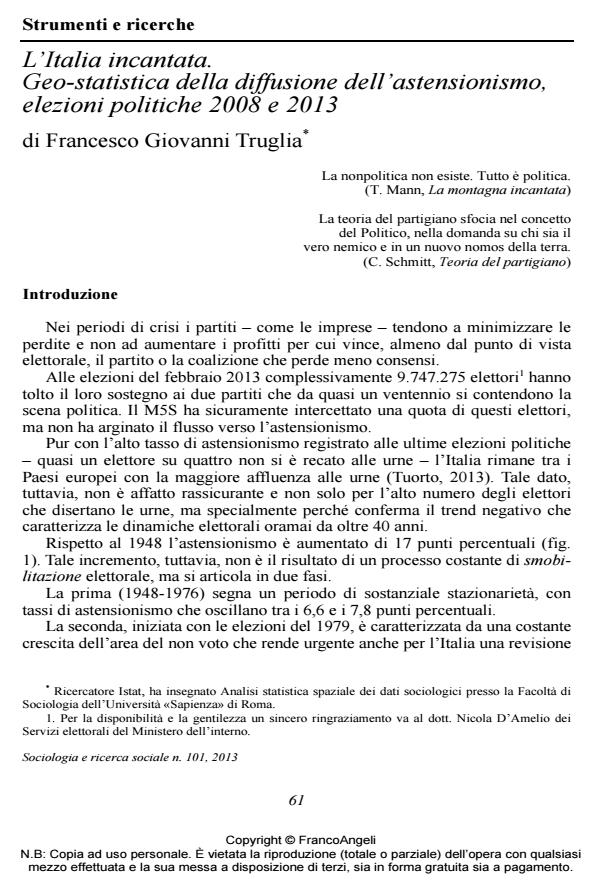L’Italia incantata. Geo-statistica della diffusione dell’astensionismo, elezioni politiche 2008 e 2013
Titolo Rivista SOCIOLOGIA E RICERCA SOCIALE
Autori/Curatori Francesco Giovanni Truglia
Anno di pubblicazione 2014 Fascicolo 2013/101
Lingua Italiano Numero pagine 30 P. 61-90 Dimensione file 986 KB
DOI 10.3280/SR2013-101003
Il DOI è il codice a barre della proprietà intellettuale: per saperne di più
clicca qui
Qui sotto puoi vedere in anteprima la prima pagina di questo articolo.
Se questo articolo ti interessa, lo puoi acquistare (e scaricare in formato pdf) seguendo le facili indicazioni per acquistare il download credit. Acquista Download Credits per scaricare questo Articolo in formato PDF

FrancoAngeli è membro della Publishers International Linking Association, Inc (PILA)associazione indipendente e non profit per facilitare (attraverso i servizi tecnologici implementati da CrossRef.org) l’accesso degli studiosi ai contenuti digitali nelle pubblicazioni professionali e scientifiche
The abstention of a large part of the voting population could be a symptom of a «genetic mutation» of the representative democracy. In this study, using data results of the 2008 and 2013 elections, we analyzed the geographical distribution of this behavior. Traditionally, electoral studies use values expressed as a percentage that tends to «cancel out» the effects of abstention on electoral results. This «neutralization» seems less effective if we consider abstention not only in terms of its impact but also as an electoral strength.
- Electoral support for the 5 Star Movement in Milan: An ecological analysis of social and spatial factors Jonathan Pratschke, Tommaso Vitale, Niccolò Morelli, Bruno Cousin, Matteo Piolatto, Matteo Del Fabbro, in Journal of Urban Affairs /2023 pp.998
DOI: 10.1080/07352166.2021.1886855 - Differenze con ripetizioni nel consenso elettorale. Elezioni politiche 1992-2022 Francesco Giovanni Truglia, in SOCIOLOGIA E RICERCA SOCIALE 131/2023 pp.186
DOI: 10.3280/SR2023-131012 - Élections régionales en Calabre, 3-4 octobre 2021 Francesco Truglia, in BLUE /2022 pp.104
DOI: 10.3917/blue.002.0104
Francesco Giovanni Truglia, L’Italia incantata. Geo-statistica della diffusione dell’astensionismo, elezioni politiche 2008 e 2013 in "SOCIOLOGIA E RICERCA SOCIALE " 101/2013, pp 61-90, DOI: 10.3280/SR2013-101003